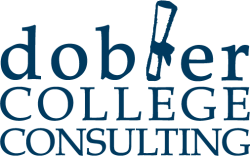What is Financial Aid?
 Financial aid is money that students and their parents can receive to help pay for college costs.
Financial aid is money that students and their parents can receive to help pay for college costs.
Aid is categorized in four ways:
Need-Based: For students and families who demonstrate a high level of need based on information provided on the FAFSA. Need-based aid can be awarded in the form of grants (federal and state), work study, low-interest loans (and often interest-deferred while enrolled) and the Parent Plus Loan.
Non-Need-Based: For students and families who qualify for private scholarships and grants outside of the FAFSA.
Merit-Based: For students who have excelled academically both with their GPA and standardized test scores.
Self-Help: Another way to categorize loans which students and families may choose to take out.
In my opinion, all students, regardless of their family’s financial situation should apply for financial aid. Why? Because it’s the only way to qualify for a federal loan. So even in a situation where a family has a high EFC (expected family contribution) and won’t qualify for any need-based aid, they can qualify for a student loan. Taking out a federally-backed loan like this with a low interest rate is a great way for a student to not only have some skin in the game but it will also help them establish some credit.
Additionally, a vast majority of students receive some form of financial aid. At private schools, where the cost of attendance can easily exceed $60,000, most students receive something as a higher cost makes it easier to demonstrate financial need.
Because this process gets complicated, it’s important to do your homework and stay on top of dates. Proper research into what a college may award, completing an EFC calculator to gain a thorough understanding of your ability to pay and running the numbers to know what potential student loan payments may look like will go a long way to helping you be more confident in the decisions you will be faced with.
If you would like some assistance with your college search, contact me today for a free 60-minute consultation.
Here’s what other families like yours are saying about how Dobler College Consulting made a difference for them.




